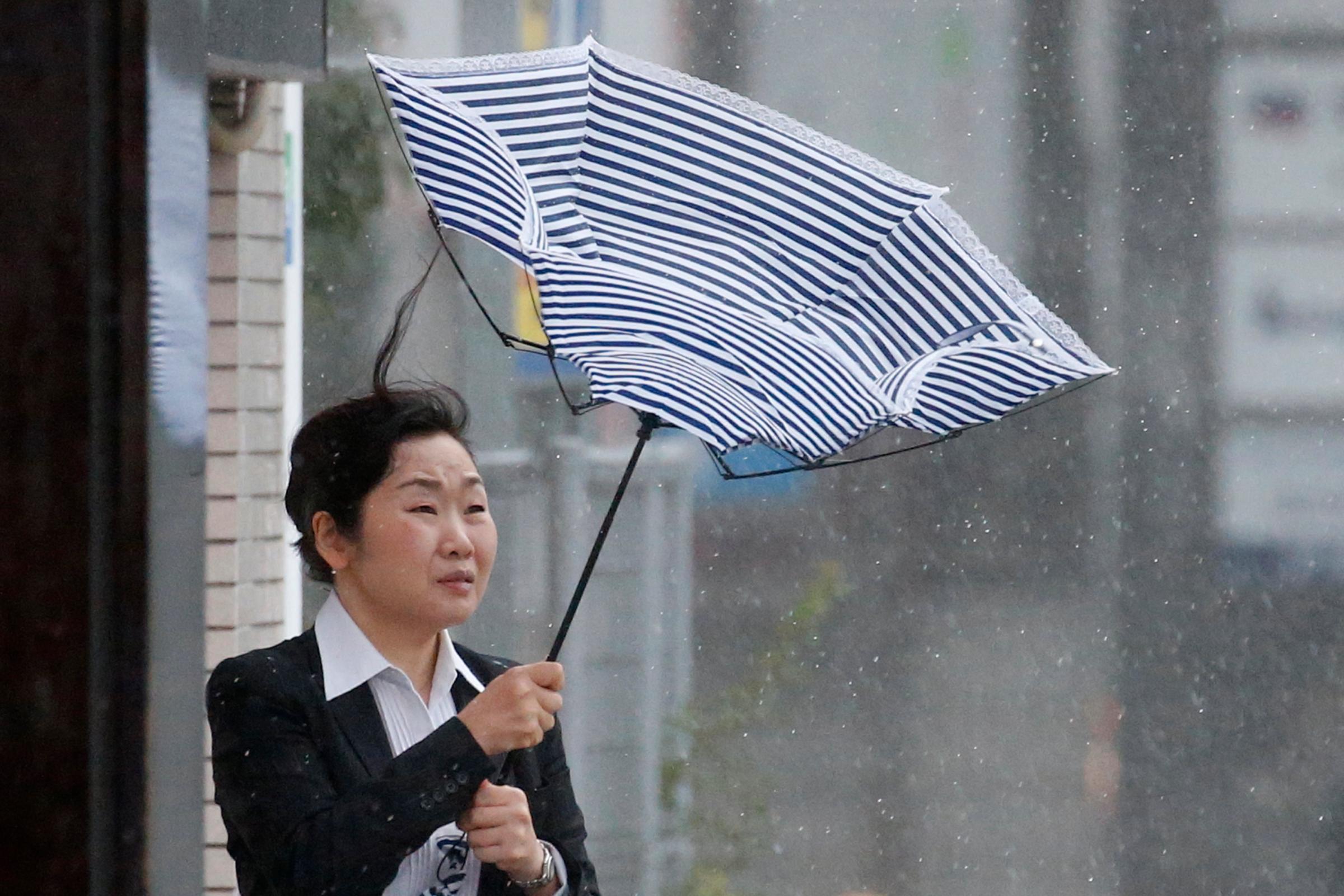Japan awoke Wednesday to massive damage caused by the strongest typhoon to strike the country in a quarter of a century.
At least eleven people have died and more than 300 were injured since Typhoon Jebi made landfall around noon Tuesday, bringing gusts of wind and driving rain across Japan’s western coast.
Dramatic videos of the storm on social media Tuesday showed winds lifting cars, toppling trees, and tearing scaffolding and cladding off buildings. Among of those killed are older people believed to have been blown down by wind or hit with flying or falling objects, and more than 1.6 million households lost power in Osaka, Kyoto and four other prefectures Tuesday, AP reports.
Authorities had advised more than 1 million people to evacuate and cancelled hundreds of flights as Japan braced for Typhoon Jebi, its strongest storm since 1993, which slammed into Shikoku island around midday before continuing north to Kobe on Japan’s main island of Honshu towards the Sea of Japan.

Heavy rain and powerful wind submerged runways at Osaka’s Kansai International Airport and pinned a fuel tanker to a bridge linking the airport to the city of Izumisano, according to national broadcaster NHK. More than 3,000 people were stranded overnight at the airport, one of Japan’s busiest travel hubs, and 750 flights were cancelled Tuesday. Travelers were transported by ferry to nearby Kobe Airport Wednesday, but an additional 162 flights were scrapped.
Japan’s meteorological agency said that the storm had downgraded to a low pressure system as it crossed the Sea of Japan early Wednesday, but cautioned that it was still moving, with winds reaching 100mph, NHK reports. Weather forecasters predicted rainfall of more than 2 inches per hour in northern and eastern Japan Wednesday, and authorities are urging people to remain wary for violent gusts of wind and surging sea waves as well as landslides and flooding.

Prime Minister Shinzo Abe canceled a planned trip to Kyushu, Japan’s southernmost main island, to supervise response efforts, according to AP. At a disaster preparedness meeting on Monday, Abe enjoined Japanese citizens to “take action to protect your lives.”
More Must-Reads from TIME
- Cybersecurity Experts Are Sounding the Alarm on DOGE
- Meet the 2025 Women of the Year
- The Harsh Truth About Disability Inclusion
- Why Do More Young Adults Have Cancer?
- Colman Domingo Leads With Radical Love
- How to Get Better at Doing Things Alone
- Michelle Zauner Stares Down the Darkness
Write to Eli Meixler at eli.meixler@time.com